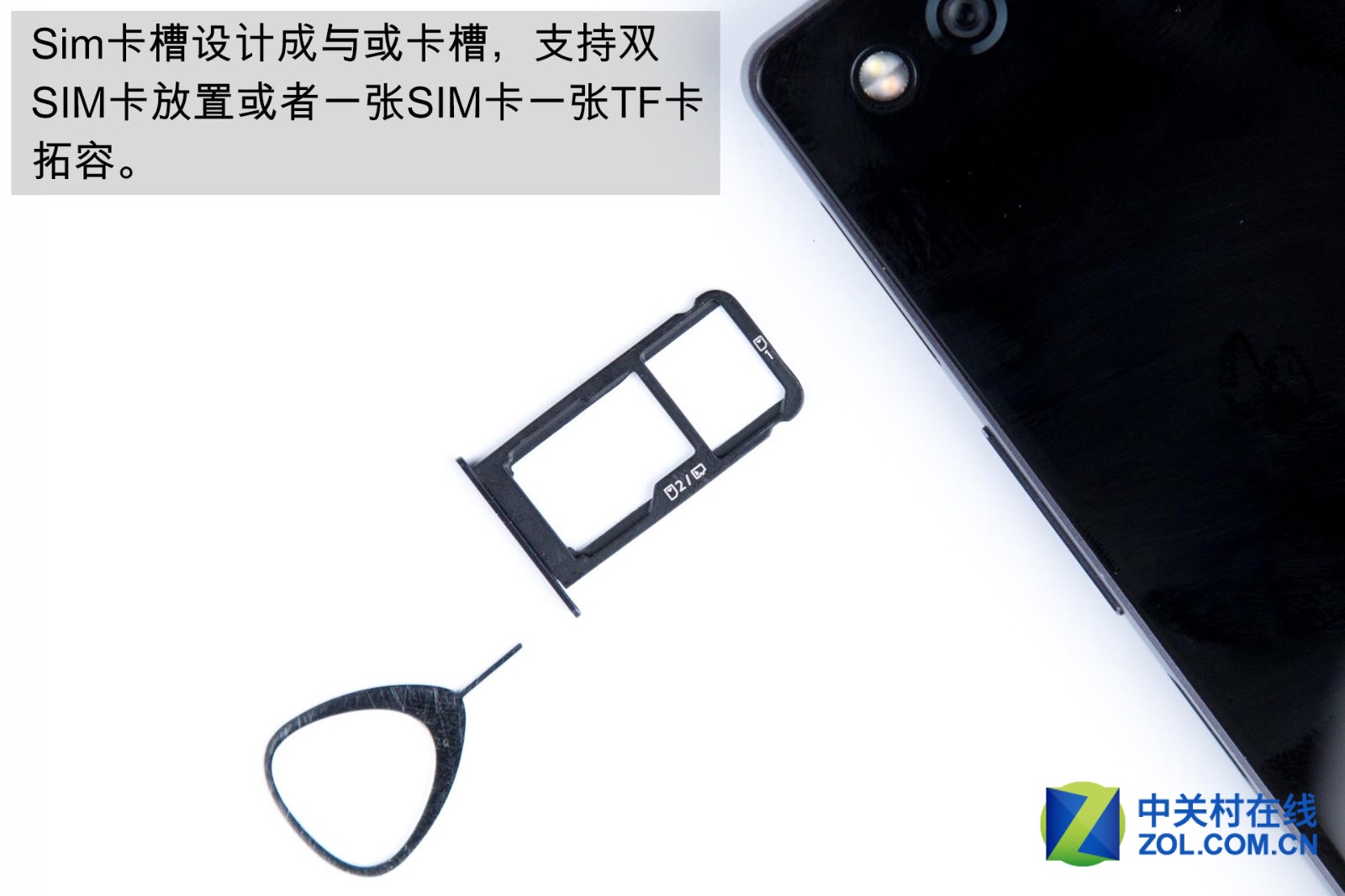As we all know, ZTE has officially launched the ZTE AXON M. The smartphone features two 5.2-inch 1080p displays. The phone has a good performance in the market due to its unique appearance design. Now, we will start the teardown of the ZTE AXON M to explore its internal structure.

First of all, remove the SIM card tray. The SIM card tray supports dual SIM cards.
Remove screws hidden under the plastic sheet.
Utilize the hexagonal screwdriver to remove the screws.
After removing all the screws, the back cover still can’t be separated from the phone body. Therefore, we need to use a clip to pry up the back cover.
Then, slide a plastic pick to unlock the snaps.
After removing the back cover, the device’s internal structure can be seen.
Its internal structure adopts a three-stage design. Some connectors are fixed by metal covers, while others are fixed by foam.
The back cover is covered by the graphite paste.
The smartphone’s four angles are thickened to improve hardness and protect internal components.
Remove two screws from the connector cover, which is placed under the motherboard.
After removing the cover, the foam used to fix the connector can be seen on the back cover.
Then, use the insulated pry to disconnect the connector of the button on the side and the connector of the fingerprint scanning module.
The main camera is covered by heat dissipation copper, which can improve the stability of the main camera’s normal work.
The phone features a 20MP main camera with an F/1.8 aperture that supports PDAF technology. After the test, we found that the main camera performed well regarding the bokeh effect.
Disconnect the connector of the secondary display. The connector uses unique soft material to guarantee signal transformation even under frequent fold operation.
Then, we can separate the main board from the phone body.
The important chips on the front of the motherboard are protected by a metal shield. Some parts of the motherboard don’t have full space utilization.
The back of the motherboard evidently has better space utilization than the front. Most chips on the back of the motherboard are covered by a shield cover.
After removing the shield covers, we found that some chips that produce a lot of heat are covered by heat conduction material to improve the heat dissipation rate. The biggest chip is sealed with memory and processor to save space on the motherboard and give the memory quicker responsive speed.
The biggest chip on the front of the motherboard is the 128GB flash memory from SanDisk.
The light distance sensor on the top adopts an independent design so that the sensor can be easily changed. Use a clip to remove the sensor.
The flash on the top right of the phone body also adopts an independent design.
Next, remove the screws at the bottom.
Then, remove the loudspeaker module.
Half of the loudspeaker is used to fix the connector and connect the cable.
Utilize the insulated pry to disconnect connectors at the bottom one by one.
Remove the PCB at the bottom.
The vibrator is supposed to be a linear vibrator with regard to its thickness.
We have finished separating the internal components on the top and bottom. The battery can be removed.
We use a pry to remove the battery.
The ZTE AXON M sports a 3,180mAh battery with a capacity of 12,33Wh. The battery supports QC3.0 technology. Its standard voltage is 3.85V.
The battery with high hardness is made from ATL.
The battery’s thickness is 4.63mm. Therefore, ZTE increased the battery capacity by thickening the battery.
Remove two screws from the secondary display.
It is not difficult to remove the secondary display. After removing two screws, we successfully take out the secondary display.
A metal base can be removed. Remove button components, and we can separate the fingerprint reader module on the side from the phone body.
Now, we have finished the teardown task on the ZTE AXON M.
Summary
In general, the ZTE AXON M not only has made a great breakthrough in its appearance design but also has good durability. The phone is designed with strict connector and chip protection. But if the smartphone’s motherboard becomes smaller to leave more space for the battery, the phone will significantly improve its practicability.